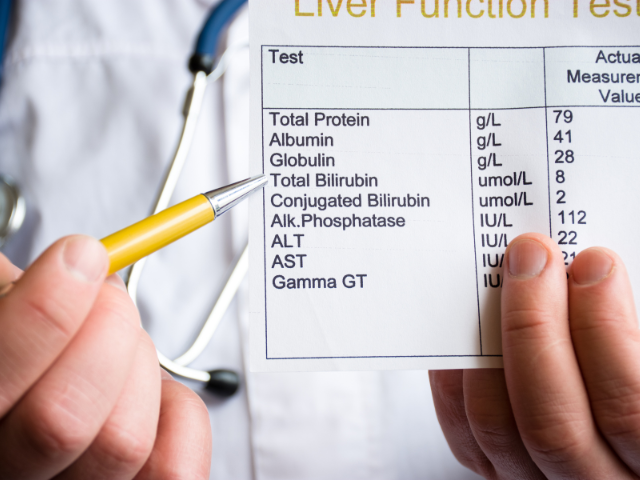Nursing Assessment
Nurses should take a detailed medication history from the patient suspected of having liver disease. Ask them about consuming hepatotoxic drugs such as anesthesia agents, analgesics, anti-seizure medications, cocaine, alcohol, isoniazid, and oral contraceptives. Moreover, investigate any recent travel history to China, Southeast Asia, sub-Saharan Africa, the Pacific Islands, and areas around the Amazon River where they might have been exposed to the hepatitis B virus.
With the travel history, also inquire about the patient’s occupational exposure. People who work as daycare workers, physicians, nurses, dental workers, and hospital laboratory workers are at risk of getting exposed to the hepatitis B virus.
Ask the patient if they have experienced previous liver or biliary disease. IV drug users and male homosexuals are at risk for hepatitis, hence liver failure. Moreover, those who eat raw shellfish are at similar risk.
Early Symptoms
The following are early symptoms of liver failure:
- Personality changes such as agitation, disorientation, and forgetfulness
- Fatigue
- Anorexia
- Mild tremors
- Drowsiness
- Low-grade fever
- Sleep disturbance
As the damaged area of the liver increases, the patient has increasing confusion, lethargy, and fatigue. Long-standing jaundice causes dry skin, vomiting, early morning nausea, weight loss, epigastric discomfort, and altered bowel habits.
Late Symptom
With fulminant hepatitis, the patient may develop the following:
- Encephalopathy: a condition that causes altered mental status and fixed facial expressions due to toxic buildup
- Peripheral swelling
- Bleeding tendencies
- Ascites
- Urine is often dark from bilirubin
- Stools are often light-colored due to the absence of bilirubin
Physical Examination
On physical examination of a patient with liver failure, you may notice various signs and symptoms such as jaundiced skin and sclera. Peripheral edema and ascites occur because of fluid retention. The patient’s facial expression appears fixed, their movements are hesitant, and their speech is slow.
Usually, the patient’s mental status is markedly decreased, and you may smell fetor hepaticus, a sweet fecal odor, on the patient’s breath. With that, the patient may also have bruises on the body, bleeding nose, and gums.
The patient with hepatic failure may have bounding and rapid peripheral pulses, indicating fluid overload and hyperdynamic circulation. On palpation, you may also notice peripheral edema, an enlarged firm liver in acute failure, and a small hard liver in chronic failure. With that, you may observe an enlarged spleen, a distended abdomen, an abdomen with shifting dullness to percussion, and a positive fluid wave because of ascites.
As ascites worsen, the patient develops hernias, an everted umbilicus, and an elevated and displaced heart because of a raised diaphragm. Mostly, the patient with late-stage disease has neck vein distention, and men develop gynecomastia, scant body hair, and testicular atrophy.
On monitoring the patient’s vital signs, you may find an elevated temperature and a low to normal blood pressure. Be nonjudgmental if liver failure occurs because of alcohol abuse. If the patient is a candidate for a liver transplant, guide them about it, lower their anxiety, and tell them it is a standard procedure with positive outcomes in most cases.
Planning and Implementation
The definitive treatment for liver failure is liver transplant. According to Statista data, in 2022, there were around 9,528 liver transplants in the United States, of which 4,306 recipients were 50-64 years of age. Liver transplants are becoming increasingly common, with full recoveries and better prognosis.
A liver transplant is needed when the patient has irreversible damage to the liver, has life-threatening complications due to liver failure, or is unable to sustain a standard quality of life. With liver failure, fluid and electrolyte imbalances, ascites, malnutrition, cerebral edema, and respiratory failure occur. Make sure the patient receives limited IV fluids( unless they have clinically significant hyponatremia) and a diet with limited sodium content, as sodium consumption can worsen the preexisting peripheral edema and ascites.
Patients with ascites are often restricted to 500mg of sodium per day. When required, perform paracentesis to remove 4 to 6 liters of fluid. If the ascites is refractory, surgical placement of a peritoneal venous shunt may be needed — moreover, correct hypokalemia with IV fluids. If the patient has severe fluid imbalances, a pulmonary artery catheter may be inserted for hemodynamic monitoring.
Patients with respiratory failure need endotracheal intubation and mechanical ventilation with supplemental oxygen. To manage nutritional intake in patients without evidence of hepatic encephalopathy, a high-calorie diet containing 80-100 g protein is prescribed to allow for cellular repair. Some patients may need enteral or total parenteral nutrition to maintain calorie and protein levels.
Serious Complications
Hepatorenal failure is treated by fluid restriction, maintenance of fluid and electrolyte balance, and withdrawal of nephrotoxic drugs. Renal dialysis is generally not used because it does not improve survival and can lead to additional complications.
With liver failure, the most common problem is fluid overload. Measure the patient’s abdominal girth at the exact location daily and mark the area as a reference point for future measurements. Inform the physician if you notice an increase in girth by 2 inches in 24 hours. Provide the allotted fluid over the three meals and at night; moreover, if the patient desires to reserve some fluids for ice chips. Provide mouth care every 2 hours. Also, take care of the edematous areas and provide skin care, as the skin there is fragile and prone to breakdown.
Another life-threatening complication of liver failure is airway compromise because of respiratory and neurological deterioration. Always keep the oral airway and intubation equipment on the bedside, as it may sometimes be needed.
Moreover, the head of the bed should be elevated at 30 degrees to ease the patient’s respiration. Support the patient’s arms on pillows to decrease the breathing effort.
Nurses must be at the bedside and perform serial assessments of all critical systems. Patients with liver failure need to be assessed now and then with proper monitoring. Make sure the patient gets adequate rest. Limit visitors to the patient and ask them not to exert themselves. You can also divert their mind with relaxation techniques. The patient may be anxious, depressed, angry, or emotionally labile. Allow them to verbalize anxieties and fears. Listen empathetically, counsel them, and, if needed, refer them to a counselor. With physical health, taking care of mental health is also essential.
Ensure the patient understands the prescribed pain medications’ dose, route, action, and side effects. Encourage the patient and their family members to maintain hand hygiene and cleanliness to prevent infections, as any infection can become lethal for the patient. Tell the patient to avoid interacting with people who have colds and flu. If the disease occurs, compel them to visit the physician soon and not take it lightly.









